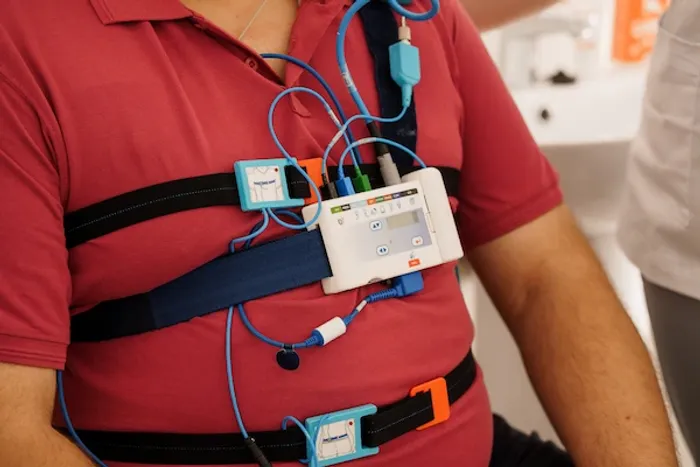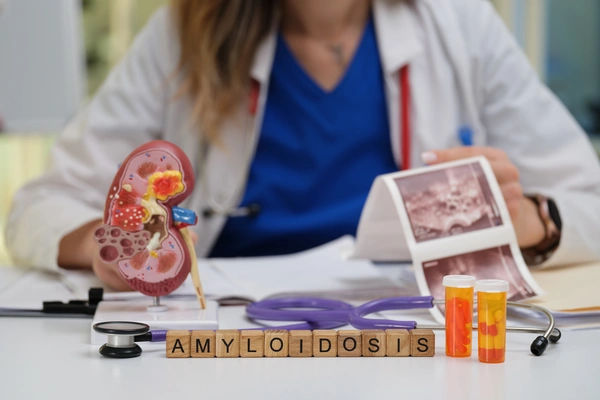Holter Monitoring: A Patient-Friendly Complete Guide
Discover a patient-friendly guide to Holter monitoring. Learn what it is, who needs it, how to prepare, what to expect, and how results are interpreted.

Written by Dr. M L Ezhilarasan
Reviewed by Dr. Rohinipriyanka Pondugula MBBS
Last updated on 28th Oct, 2025

Introduction
If your doctor has recommended Holter monitoring, you might be wondering what it involves—and how it will affect your day. A Holter monitor is a small, wearable device that records your heartbeat continuously, usually for 24 to 48 hours, while you go about your normal routine. Unlike a standard ECG that captures just a few seconds, Holter monitoring watches your heart long enough to catch symptoms that come and go, like palpitations, dizziness, or brief fainting spells.
In this guide, you’ll learn what a Holter monitor is, who needs it, how to prepare, and what to expect while wearing it. We explain how results are interpreted, how accurate the test is, and when newer options like patch monitors or event recorders might be more suitable. You’ll also find practical tips for sleeping, working, and exercising with the device, plus next steps after your results. Whether you’re scheduled for a 24-hour Holter test or exploring your options, this clear, step-by-step guide will help you feel prepared and confident.
What is Holter Monitoring?
A Holter monitor is a portable, battery-powered device that continuously records your heart’s electrical activity for a day or more while you carry on with your usual activities. Small electrodes on your chest detect each heartbeat and send the signal to the monitor. Doctors use Holter monitoring to detect rhythm problems that may be missed on a brief, in-clinic ECG. It is painless, noninvasive, and designed for everyday life.
How a Holter monitor records your heartbeat continuously
Unlike a standard ECG, which records for about 10 seconds, Holter monitoring captures every beat over 24 to 48 hours or longer. Continuous recording is crucial when symptoms are intermittent. You’ll typically be asked to press a button to mark symptoms and keep a diary of what you felt and when. Linking your diary entries to the ECG data helps clinicians understand if symptoms like palpitations are related to an abnormal rhythm.
Holter vs standard ECG vs event monitor: key differences
- Standard ECG: Short snapshot in a clinic; can miss sporadic events
- Holter monitor (24–48 hours): Continuous recording; ideal for daily or frequent symptoms
- Event monitor/patch monitor: Worn longer (up to 14–30 days); better for infrequent symptoms
24-hour, 48-hour, and multi-day patch options
Your doctor may choose wear-time based on how often you have symptoms. Daily palpitations may only need a 24-hour Holter, while infrequent symptoms might require a 48-hour Holter or a 7–14 day patch monitor to improve detection chances
Who Needs a Holter Monitor and Why
Here's who benefits from Holter monitoring and why it is recommended:
Common symptoms: palpitations, dizziness, fainting, chest discomfort
Holter monitoring is often advised for symptoms that come and go, such as fluttering or pounding heartbeats, lightheadedness, brief loss of consciousness, or unexplained chest discomfort. Since these issues may not occur during a clinic visit, ambulatory monitoring helps capture events in real time
Consult Top Specialists
Conditions detected: AFib, SVT, bradycardia, PVCs
Holter monitoring can reveal:
- Atrial fibrillation or atrial flutter
- Supraventricular tachycardia
- Ventricular premature beats and ventricular tachycardia
- Bradycardia, sinus pauses, or AV block
- Rate control problems in people already diagnosed with AFib
Special groups: children, athletes, pregnancy
- Children: Small electrodes for fainting, congenital heart disease, or palpitations
- Athletes: Differentiates fitness adaptations from arrhythmias
- Pregnancy: Safe and noninvasive; useful for common palpitations
If symptoms persist or you have frequent fainting, consult a doctor online with Apollo 24|7 for personalised advice
Getting Ready: Preparation and What to Expect
Here's how to prepare for Holter monitoring and maximise its accuracy:
Before the test: medicines, skin prep, showering
- Follow your doctor’s instructions regarding heart medicines
- Shower before the appointment; bathing or swimming is not allowed with standard Holters
- Avoid lotions or oils on your chest; trim chest hair if needed for electrode contact
What to wear and bring (and what to leave at home)
- Wear a two-piece outfit for easy chest access
- Bring a list of medications, allergies, and your schedule
- Leave heavy jewellery or magnetic accessories at home
Symptom diary: how to make it useful
Note the exact time, activity, and duration of each symptom. Mark events on the monitor and in your diary to help clinicians align symptoms with ECG readings
Consent, data privacy, and what gets recorded
You’ll sign consent forms and learn how data is stored. Holter monitors record heart electrical activity, not conversations. Ask your provider if you have privacy concerns
The Day You Wear It: Step-by-Step Experience
Here's what to expect while wearing a Holter monitor:
Electrode or patch placement and quick fit-check
A technician cleans your chest and applies electrodes or a patch. Wires connect to the monitor, which clips to your belt or pocket. The technician ensures a clear signal and shows you how to mark symptoms. The setup usually takes 15–20 minutes
Living with the device: work, sleep, exercise, bathroom
- Work: Most can continue normally; check if your job involves machinery or strong electromagnetic fields
- Sleep: Sleep on your back or side; wear a snug T-shirt to keep wires secure
- Exercise: Light activity is usually fine; avoid water and high-sweat workouts unless advised
- Bathroom: Standard Holters aren’t waterproof; patch monitors may be water-resistant
Avoiding water, magnets, and rough workouts
Avoid swimming, baths, and saunas. Keep the monitor away from strong magnets. Avoid contact sports or activities that could pull the wires
Troubleshooting: loose electrodes, itching, beeps
Press loose electrodes back gently or call the clinic if they won’t stick. Mild itching is common; severe redness requires medical advice. Check connections if the monitor beeps
After the Test: Results, Accuracy, and What They Mean
Here's what happens after Holter monitoring is complete:
How clinicians analyse the recording and your diary
The device is returned, and data is downloaded for analysis. Computers scan for abnormal rhythms, while clinicians verify findings against your diary. The report summarises rhythm types, heart rate ranges, events, and their relationship to symptoms. Results usually arrive within a few days to a week
How accurate is Holter monitoring? What it can and can’t catch
Holters are effective for frequent arrhythmias but may miss rare events. Longer monitoring, patch monitors, or event recorders may be needed for infrequent symptoms
What happens if no symptoms occurred during the test
If no symptoms occurred, your doctor may recommend longer monitoring, a different device, or tests for other causes such as thyroid, electrolytes, or anaemia. Apollo 24|7 offers convenient home collection for these labs
When results lead to further tests or treatment
Abnormal findings may prompt echocardiography, stress testing, medication changes, or referral to a specialist. Persistent or worsening symptoms require follow-up with a doctor online or in person
Alternatives and Newer Options You Might Hear About
Here's a look at other monitoring devices and when they are used:
Event monitors, patch monitors, and mobile ECGs
- Event monitors: Worn for weeks; capture events manually or automatically
- Patch monitors: Adhesive, water-resistant, worn up to 14 days; detect more arrhythmias due to longer recording
- Mobile/smartphone ECGs: Useful for on-demand recordings; good for frequent palpitations
Implantable loop recorders for infrequent symptoms
For rare symptoms, an implantable loop recorder under the skin can monitor continuously for years, providing the highest chance of detecting infrequent events
Choosing the right tool based on symptom frequency and lifestyle
- Daily symptoms: 24–48-hour Holter
- Weekly: 7–14 day patch or event monitor
- Monthly or rarer: Event monitor or implantable loop recorder
Safety, Side Effects, and Practical Tips
Here's what to know about safety and minor side effects:
Skin irritation, adhesive allergies, and how to prevent them
Most people only experience mild skin redness. For sensitive skin, use hypoallergenic electrodes, rotate placement if instructed, keep skin dry before application, and report rashes promptly
Driving, travel, airport security, and workplace electronics
Driving is usually safe unless fainting risk exists. Holters pass through airport security; show your device card. Routine electronics don’t interfere; high-power magnets may
Red flags: when to call your doctor urgently
Seek care for chest pain, prolonged fainting, severe shortness of breath, or new neurological symptoms. Persistent or worsening symptoms require evaluation online with Apollo 24|7
Real-Life Examples and Useful Data
Here's how Holter monitoring helps in practice:
Palpitations example: benign PVCs vs serious arrhythmias
A 35-year-old experiences skipped beats; Holter shows occasional PVCs without concerning patterns. Lifestyle changes are usually sufficient. Contrast with complex ventricular runs, which may require further testing
Fainting example: bradycardia caught on Holter
A 68-year-old with brief fainting episodes shows sinus pauses and intermittent AV block at night. This may lead to pacemaker evaluation; clinic ECG alone might have missed these pauses
Why longer monitoring sometimes finds more
Extended monitoring increases detection of arrhythmias because more data is recorded. Scheduling monitoring during high-symptom periods can improve diagnostic yield
Next Steps: Caring for Your Heart After Your Results
Here's how to act after receiving Holter results:
Lifestyle changes: caffeine, sleep, hydration, stress
Limit caffeine and alcohol, stay hydrated, prioritise sleep, manage stress, and avoid stimulant medications. These steps often help if benign ectopics are detected
Medicines, follow-ups, and when to repeat monitoring
Doctors may adjust medications or recommend procedures based on findings. Repeat monitoring may be advised to confirm control. If symptoms continue, consider longer-term monitoring. Consult a doctor online with Apollo 24|7 if needed
When to consult a doctor online or in-person
- Online: Nonurgent review, ongoing palpitations, lifestyle advice
- In-person: Worsening symptoms, fainting, abnormal findings requiring physical assessment
Conclusion
Holter monitoring is an effective way to investigate heart rhythm issues that occur intermittently, especially when a brief ECG hasn’t provided answers. By recording your heart’s electrical activity over 24–48 hours, Holter monitoring connects everyday symptoms with real-time data. For many, results are reassuring, showing benign rhythms improved by small lifestyle changes. For others, the test uncovers arrhythmias needing timely treatment.
Preparation is key: arrive with clean, lotion-free skin, keep a symptom diary, and continue normal routines unless advised otherwise. If symptoms are infrequent, extended options like patch monitors or event recorders may increase detection. Your results are the start of a personalised plan that may include lifestyle changes, medication adjustments, or further monitoring. If symptoms persist or concerning signs arise, consult a doctor online with Apollo 24|7. Home collection of related lab tests is available for convenience, helping you manage heart health with clarity and confidence
Consult Top Specialists
Consult Top Specialists

Dr. Tripti Deb
Cardiologist
40 Years • MBBS, MD, DM, FACC, FESC
Hyderabad
Apollo Hospitals Jubilee Hills, Hyderabad

Dr. Anand Ravi
General Physician
2 Years • MBBS
Bengaluru
PRESTIGE SHANTHINIKETAN - SOCIETY CLINIC, Bengaluru

Dr. Deepesh Venkatraman
Cardiologist
10 Years • MBBS, MD (Gen Med), DM (Cardio), DNB (Cardio)
Chennai
Apollo Medical Centre Kotturpuram, Chennai

Dr. L Kiran Kumar Reddy
Cardiologist
15 Years • MBBS,MD, Gen Med (KMC) DM Cardiology (JIPMER)
Hyderabad
Apollo Medical Centre Kondapur, Hyderabad

Dr. Rakesh Gopal
Cardiologist
22 Years • “ Trained in Trans Aortic Valve Implantation ( TAVI ) from Mehmet Akif Ersoy Hospital Istanbul, Turkey “ & MD (General Medicine), FRCP (Glasglow)DNB( Cardiology), FESC, HICR Cert (Harvard University, USA), Angioplasty Training from Washington Adventist Hospital USA, Asan Medical Centre, Seoul Korea, Board certified in Cardio Oncology, ICOS- USA
Chennai
Apollo Hospitals Heart Centre Thousand Lights, Chennai
(100+ Patients)
Consult Top Specialists

Dr. Tripti Deb
Cardiologist
40 Years • MBBS, MD, DM, FACC, FESC
Hyderabad
Apollo Hospitals Jubilee Hills, Hyderabad

Dr. Anand Ravi
General Physician
2 Years • MBBS
Bengaluru
PRESTIGE SHANTHINIKETAN - SOCIETY CLINIC, Bengaluru

Dr. Deepesh Venkatraman
Cardiologist
10 Years • MBBS, MD (Gen Med), DM (Cardio), DNB (Cardio)
Chennai
Apollo Medical Centre Kotturpuram, Chennai

Dr. L Kiran Kumar Reddy
Cardiologist
15 Years • MBBS,MD, Gen Med (KMC) DM Cardiology (JIPMER)
Hyderabad
Apollo Medical Centre Kondapur, Hyderabad

Dr. Rakesh Gopal
Cardiologist
22 Years • “ Trained in Trans Aortic Valve Implantation ( TAVI ) from Mehmet Akif Ersoy Hospital Istanbul, Turkey “ & MD (General Medicine), FRCP (Glasglow)DNB( Cardiology), FESC, HICR Cert (Harvard University, USA), Angioplasty Training from Washington Adventist Hospital USA, Asan Medical Centre, Seoul Korea, Board certified in Cardio Oncology, ICOS- USA
Chennai
Apollo Hospitals Heart Centre Thousand Lights, Chennai
(100+ Patients)
More articles from General Medical Consultation
Frequently Asked Questions
Can I shower with a Holter monitor?
Most traditional Holter monitors aren’t waterproof, so avoid showers, baths, and swimming. Some patch monitors are water-resistant—ask your clinic for device-specific instructions.
What if I don’t feel any symptoms during Holter monitoring?
It’s still useful. If no symptoms occur and results are inconclusive, your clinician may suggest longer monitoring (e.g., a 7–14 day patch) to improve detection.
How accurate is a 24-hour Holter test?
It’s very good for frequent symptoms, but infrequent arrhythmias may be missed in 24 hours. Longer monitoring options often detect more.
Are there side effects from wearing a Holter monitor?
Side effects are uncommon and usually limited to mild skin irritation from adhesives. If you have sensitive skin or develop a rash, contact your clinic.
How do I sleep with a Holter monitor?
Wear a snug T-shirt to keep wires secure and try sleeping on your back or side. Avoid tugging the leads and keep the device nearby.




